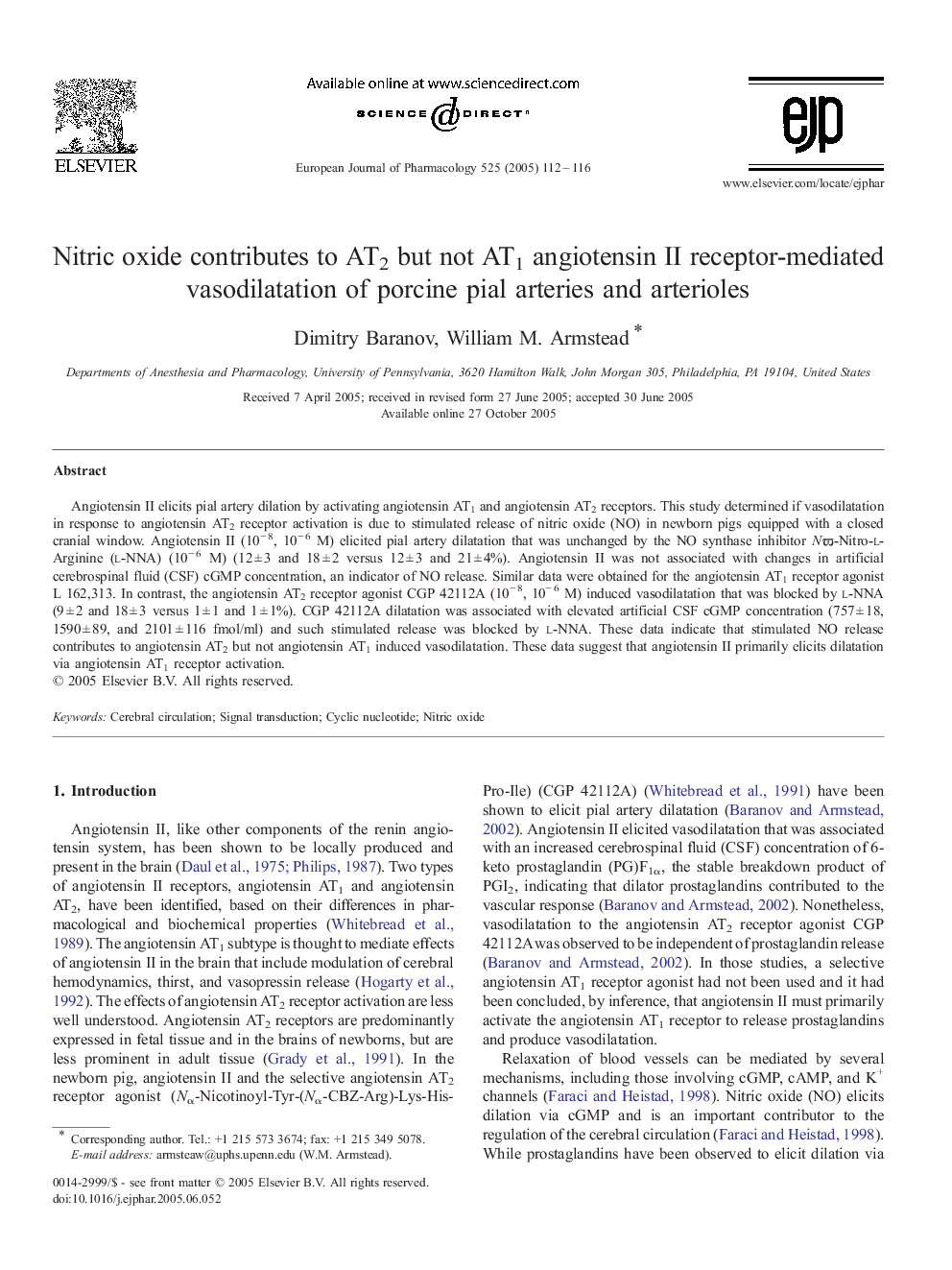| Article ID | Journal | Published Year | Pages | File Type |
|---|---|---|---|---|
| 9920994 | European Journal of Pharmacology | 2005 | 5 Pages |
Abstract
Angiotensin II elicits pial artery dilation by activating angiotensin AT1 and angiotensin AT2 receptors. This study determined if vasodilatation in response to angiotensin AT2 receptor activation is due to stimulated release of nitric oxide (NO) in newborn pigs equipped with a closed cranial window. Angiotensin II (10â 8, 10â 6 M) elicited pial artery dilatation that was unchanged by the NO synthase inhibitor NÏ-Nitro-l-Arginine (l-NNA) (10â 6 M) (12 ± 3 and 18 ± 2 versus 12 ± 3 and 21 ± 4%). Angiotensin II was not associated with changes in artificial cerebrospinal fluid (CSF) cGMP concentration, an indicator of NO release. Similar data were obtained for the angiotensin AT1 receptor agonist L 162,313. In contrast, the angiotensin AT2 receptor agonist CGP 42112A (10â 8, 10â 6 M) induced vasodilatation that was blocked by l-NNA (9 ± 2 and 18 ± 3 versus 1 ± 1 and 1 ± 1%). CGP 42112A dilatation was associated with elevated artificial CSF cGMP concentration (757 ± 18, 1590 ± 89, and 2101 ± 116 fmol/ml) and such stimulated release was blocked by l-NNA. These data indicate that stimulated NO release contributes to angiotensin AT2 but not angiotensin AT1 induced vasodilatation. These data suggest that angiotensin II primarily elicits dilatation via angiotensin AT1 receptor activation.
Related Topics
Life Sciences
Neuroscience
Cellular and Molecular Neuroscience
Authors
Dimitry Baranov, William M. Armstead,
